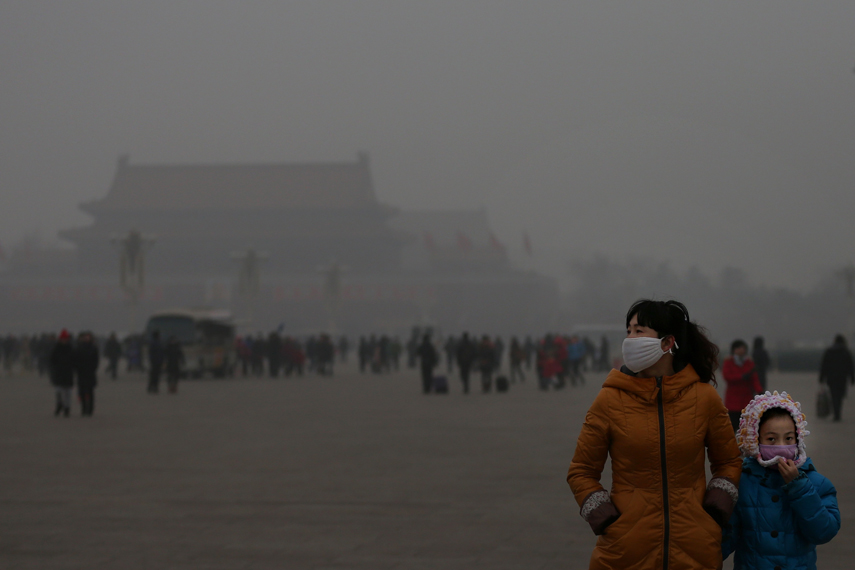Beijing has raised its air pollution alert to “orange” — the highest level reached so far this year.
The Chinese capital city, which has suffered from serious air pollution for years, saw its smog hit “hazardous” levels. The government issued the alert on Sunday after its PM 2.5 (particles with a diameter smaller than 2.5 micrometers) levels reached 274 micrograms per cubic meter, Mashable reported, citing the state-run Xinhua news agency.
That is more than 10 times over the World Health Organization’s PM 2.5 guideline of 25 micrograms per cubic meter.
With the alert upgraded from yellow to orange, industrial plants in the city are required to reduce or shut down production, and construction sites have to stop their heavy duty trucks from transporting material on the roads.
The lack of wind in Beijing also means the smog is expected to be around until a cold front hits on Wednesday, said the municipal weather center.
According to monitors, PM 2.5 levels continued to surge on Monday morning, reaching an alarming 480.
For years, Beijing’s air pollution has been particularly serious compared with other cities in China, caused in large part by vehicle emissions in the crowded city and coal burning in nearby industrial cities. As a nation, China consumes more than half the world’s coal and its carbon emissions are twice that of the US, the world’s second largest emitter.
China’s Environment Minister Chen Jining said China needed a further 30-50% reduction in pollutants in order to significantly improve its damaged air, soil and water, however. The country still discharges 20 million tons of major pollutants annually.
But to demonstrate its commitment to reducing emissions, China will launch an emissions trading plan in 2017. This will limit the carbon footprint of companies, and allow those who produce less carbon dioxide than their quota to sell off the remainder to other firms. This move follows in the footsteps of the European Union, which ten years ago introduced a cap-and-trade program.


